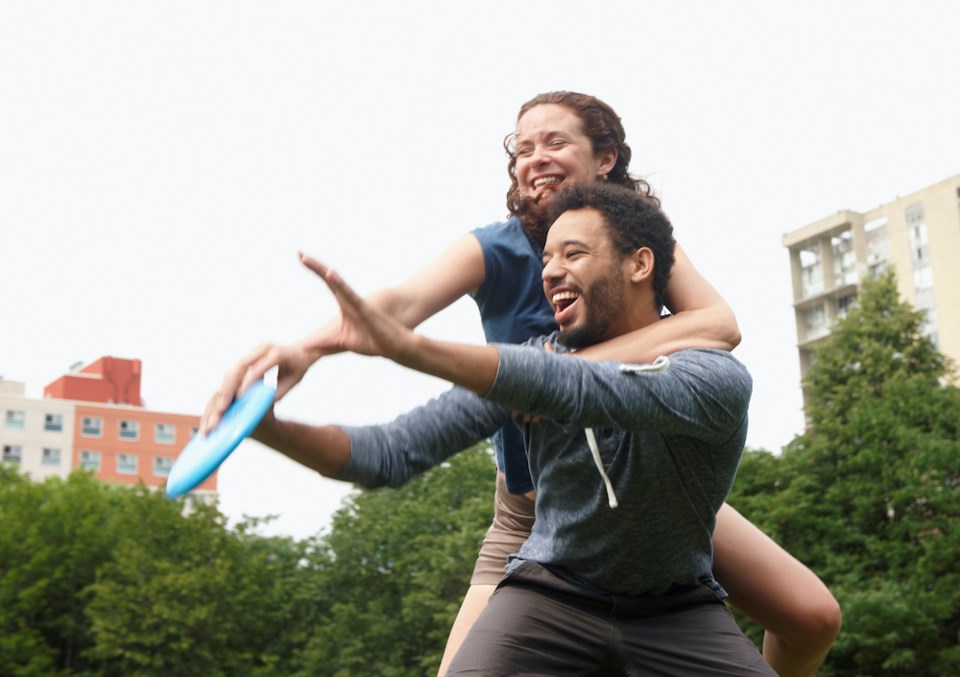We all know that getting regular physical activity is important for improving our vitality and reducing our risk for chronic health conditions. However, interest in traditional, structured exercise programs is often abandoned shortly after signing up and militant philosophies such as a no pain, no gain attitude typically last only as long as willpower prevails.
With these limited options it leaves little room for motivation when it comes to movement, so what is someone to do if they don’t enjoy traditional exercise?
Enter joyful movement -- a non-intimidating approach to physical activity that emphasizes moving with pleasure over metrics and encourages individuals to participate in activities that feel good in their bodies.
Although it may seem obvious to some, in an era of diet culture, fitness trackers and obsessive calorie counting where disordered eating behaviour is on the rise, this paradigm shift truly is revolutionary.
Joyful movement facilitates the transition from commonly negative experiences associated with exercise such as penance for eating choices, moral obligation and competition, to positive ones such as pleasure, mindfulness and enhanced body awareness.
Shifting the focus of movement away from performance-based exercise opens up the door for individuals to explore movement from a place of self-compassion and curiosity, two key factors that embody overall wellness.
If finding joy in exercise has been a source of struggle, here are four simple steps you can take to make your movement more gratifying:
Step outside the conventional exercise box
We live in a society that idolizes the “hustle for the muscle” mentality. Thus, we have been conditioned to believe that only the most intense and gruelling types of exercise count. But all forms of movement are equal and beneficial to our health. Simply put, the best kind of exercise is the kind that you’ll do. And the kind you’ll do is the kind you enjoy the most!
Explore different types of movement that feel fun and bring you joy. Whether it be rollerblading, playing frisbee, or kayaking, all movement matters.
Take a non-judgmental approach
Contrary to popular belief, you can participate in movement simply because you enjoy it, not because you have to be good at it. Many of us write off trying new activities out of fear we won’t excel at them on the first day. Who knows! You may discover your new favourite activity or meet an exercise buddy when you step outside of your comfort zone.
Let your body guide you
Instead of focusing your attention on external cues such as time, heart rate and calories burned to determine your exercise intensity, listen to your body to guide you. Reaching a new metric or goal isn’t a requirement for reaping the benefits of exercise. Moving with mindfulness increases body awareness and lets you be in the driver’s seat of your movement, instead of it becoming dictated by numbers or achieving records.
Prioritize how you feel over how you look
Movement that nurtures your body instead of breaking it down will cultivate a healthy relationship with exercise. Take a moment before and after movement to be intentional and check in with how the movement made you feel. While joyful movement isn’t necessarily effortless, you should be left feeling invigorated or rejuvenated afterwards. The benefits of movement and its impact on your internal health will be far more valuable than short-lived fitness programs focused on changing your external appearance.
While the type of movement that brings us joy will differ for each of us, taking the above approaches to your movement practice will ultimately lead to a healthier more sustainable relationship with exercise.
Kelsey Ellis is a Certified Personal Trainer, Registered Holistic Nutritionist, and Certified Professional Life Coach in Vancouver. Her focus is body positivity and helping people move with joy, build self-acceptance and take the shame out of their fitness game. Find Kelsey on Instagram at @healthy_with_kelsey.



